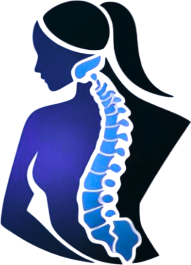FAQ
What is scoliosis surgery?
When is scoliosis surgery necessary?
Surgery is usually recommended when:
• The spinal curve is greater than 45–50 degrees
• The curve is progressing
• The patient experiences pain, breathing problems, or reduced quality of life
• Bracing is no longer effective (in adolescents)
What type of scoliosis can be treated with surgery?
Surgery can treat:
• Adolescent idiopathic scoliosis
• Congenital scoliosis
• Neuromuscular scoliosis
• Adult degenerative scoliosis (in selected cases)
How is the surgery performed?
How long does the surgery take?
What are the risks of scoliosis surgery?
While complications are rare, potential risks include:
• Infection
• Bleeding
• Nerve injury (very rare) with a possible permanent or temporary neurologic deficit.
• Non-union or failure of bones to fuse
• Implant issues
• Pain at the graft site (if bone graft is used from the patient)
Will scoliosis surgery completely straighten my spine?
How long is the hospital stay?
What is the recovery time after scoliosis surgery?
• Most people return to school/work in 4 to 6 weeks
• Full recovery and fusion of the spine can take 6 to 12 months
• Physical activity is gradually increased under supervision
Will I need physical therapy?
Will the rods and screws stay in my back permanently?
Can I still play sports or be active after scoliosis surgery?
Will the surgery affect my height?
What follow-up care is required?
Is scoliosis surgery safe?
What types of spine surgery are common?
Some of the most common types include:
• Discectomy – removal of a herniated disc
• Laminectomy – removal of bone or ligament causing nerve compression
• Spinal fusion – joining two or more vertebrae to stabilize the spine
• Artificial disc replacement
• Vertebroplasty/kyphoplasty – for spinal fractures
• Scoliosis or deformity correction surgery
What is the typical recovery time after spine surgery?
Recovery times vary:
• Minor procedures: 2–6 weeks
• Fusion or deformity surgery: 3–6 months or longer
Most patients gradually return to normal activities under medical supervision.
Will I need physical therapy after surgery?
Can I walk after spine surgery?
How do I prepare for spine surgery?
• Stop smoking (if applicable)
• Maintain a healthy weight
• Follow pre-op instructions (medications, fasting, etc.)
• Arrange help at home for your recovery
• Discuss any concerns with your surgical team


